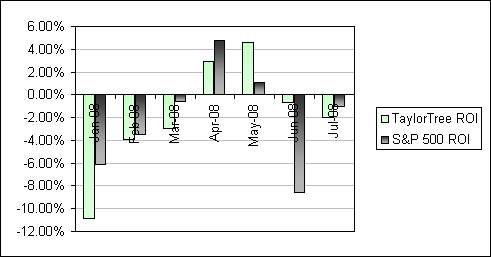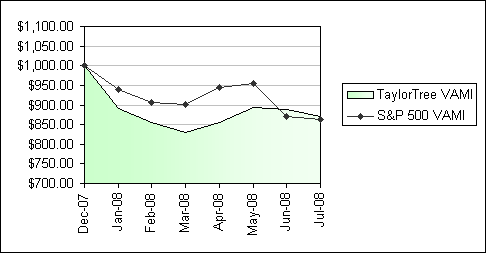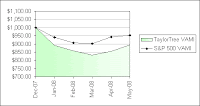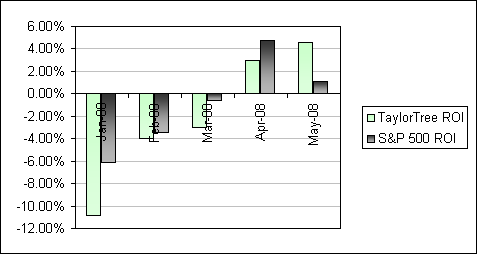Since I'm using python...figured I had to give the matplotlib library a try. It is nice...simple...but something was missing. Couldn't put my finger on it. So, dug around and played with the R language plotting libraries. A bit more my speed...though a bit particular in the settings. Anyway, here's a function I wrote to generate bar charts using R with a replacement for pie charts in mind...
#-----------------------------------------------------------------
# Simple bar chart - use instead of pie chart when possible.
#-----------------------------------------------------------------
barPie <- function(xSeries, chTitle="Your Bar Chart", xLab="X Label",
xDesc="%")
{
xSeries <- sort(xSeries)
# save off original settings in order to reset on exit
oldPar <- par(no.readonly=TRUE)
plot.new()
# set page margins in inches
par(mai=c(1,1.5,1,1))
# pad 30% for labels
# start plotting at 0.0 unless negative
if (min(xSeries) < 0.0)
{
xLim = c((min(xSeries) * 1.3), (max(xSeries) * 1.3))
}
else
{
xLim = c(0.00, (max(xSeries) * 1.3))
}
# horizontal barplot in color baby!
bp <- barplot(xSeries, horiz=T,
xlab=xLab, las=1, col=rainbow(length(xSeries)),
xlim=xLim,
axes=F, cex.names=0.7, main=chTitle)
# if x negative then start label at 0.0
# otherwise, start label at value of x.
xVals = ifelse(xSeries < 0.0, 0.0, xSeries)
text(xVals, bp, paste(xSeries, xDesc, sep=""),pos=4, cex=0.65)
# format x axis
xRange <- formatC(pretty(xSeries), 1, format="f")
axis(1, at=xRange, labels=as.character(xRange), cex.axis=0.75)
box()
#restore par value to previous state
on.exit(par(oldPar))
}
Used data from my portfolio to plot sector allocations and called the function...
sectors <- c(10.64,119.83,162.66,66.48,71.78,35.44,32.77,161.17,53.91,
101.81,53.38,231.45,31.24,103.01)
sectors <- round((sectors/sum(sectors)*100.00), 1)
# write to png driver
png("c:/taylortrade/rlang/sectors_test.png")
barPie(sectors, "Sector Allocation", "Pct Allocated")
# stop writing to png driver
dev.off()
And here's the result...

 Some very nice weather happening here in Missouri. In fact, in all my life I've never had weather like this in August/September
Some very nice weather happening here in Missouri. In fact, in all my life I've never had weather like this in August/September 
















